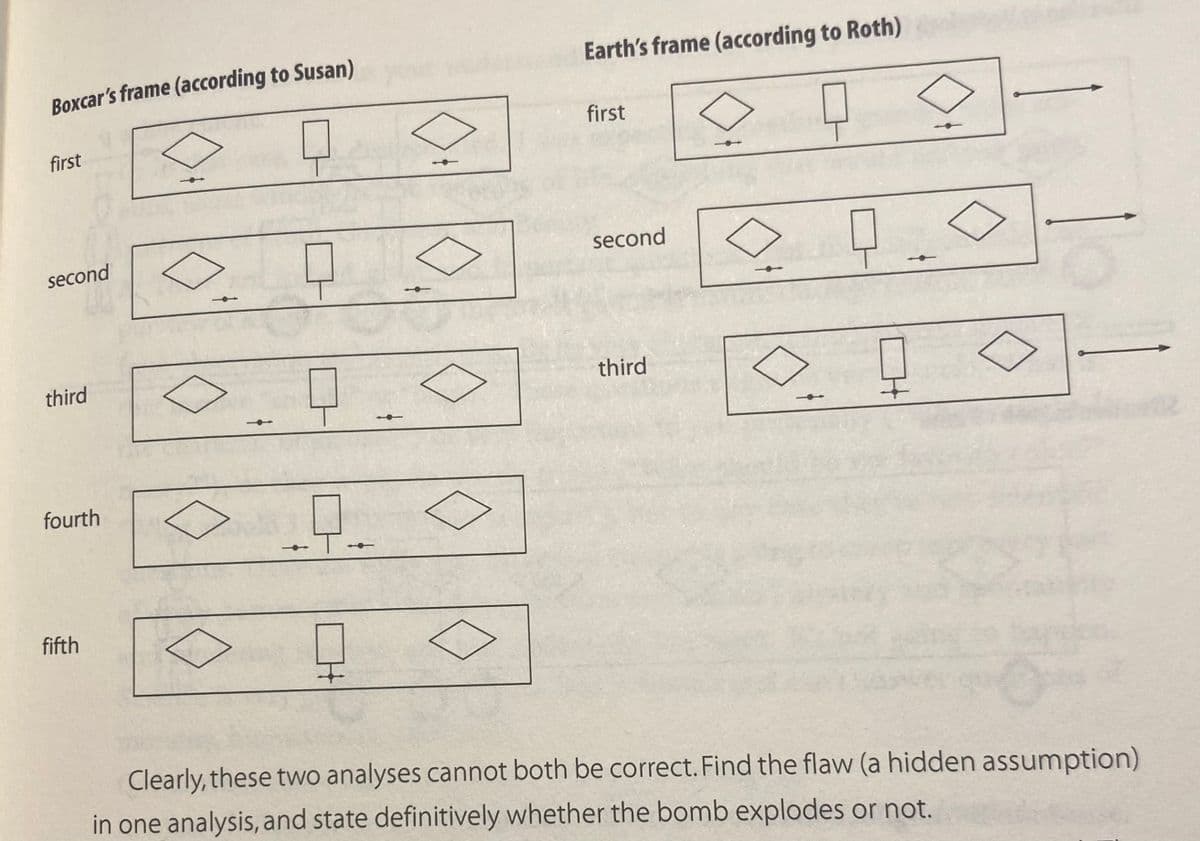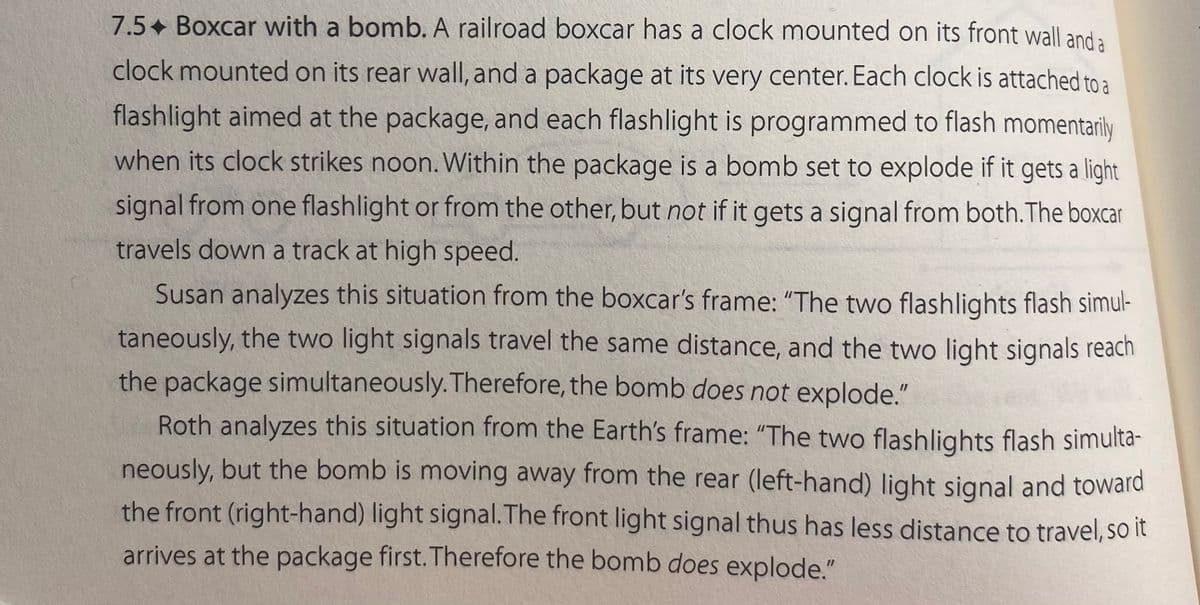7.5+ Boxcar with a bomb. A railroad boxcar has a clock mounted on its front wall and a clock mounted on its rear wall, and a package at its very center. Each clock is attached to a flashlight aimed at the package, and each flashlight is programmed to flash momentarily when its clock strikes noon. Within the package is a bomb set to explode if it gets a light signal from one flashlight or from the other, but not if it gets a signal from both. The boxcar travels down a track at high speed. Susan analyzes this situation from the boxcar's frame: "The two flashlights flash simul- taneously, the two light signals travel the same distance, and the two light signals reach the package simultaneously. Therefore, the bomb does not explode." Roth analyzes this situation from the Earth's frame: "The two flashlights flash simulta- neously, but the bomb is moving away from the rear (left-hand) light signal and toward the front (right-hand) light signal. The front light signal thus has less distance to travel, so it arrives at the package first. Therefore the bomb does explode."
7.5+ Boxcar with a bomb. A railroad boxcar has a clock mounted on its front wall and a clock mounted on its rear wall, and a package at its very center. Each clock is attached to a flashlight aimed at the package, and each flashlight is programmed to flash momentarily when its clock strikes noon. Within the package is a bomb set to explode if it gets a light signal from one flashlight or from the other, but not if it gets a signal from both. The boxcar travels down a track at high speed. Susan analyzes this situation from the boxcar's frame: "The two flashlights flash simul- taneously, the two light signals travel the same distance, and the two light signals reach the package simultaneously. Therefore, the bomb does not explode." Roth analyzes this situation from the Earth's frame: "The two flashlights flash simulta- neously, but the bomb is moving away from the rear (left-hand) light signal and toward the front (right-hand) light signal. The front light signal thus has less distance to travel, so it arrives at the package first. Therefore the bomb does explode."
Related questions
Question
100%

Transcribed Image Text:Boxcar's frame (according to Susan)
first
second
third
fourth
fifth
9.0
_ㅁ.
Earth's frame (according to Roth)
0
ㅇㅁ
first
second
third
<!
Clearly, these two analyses cannot both be correct. Find the flaw (a hidden assumption)
in one analysis, and state definitively whether the bomb explodes or not.

Transcribed Image Text:7.5+ Boxcar with a bomb. A railroad boxcar has a clock mounted on its front wall and a
clock mounted on its rear wall, and a package at its very center. Each clock is attached to a
flashlight aimed at the package, and each flashlight is programmed to flash momentarily
when its clock strikes noon. Within the package is a bomb set to explode if it gets a light
signal from one flashlight or from the other, but not if it gets a signal from both. The boxcar
travels down a track at high speed.
Susan analyzes this situation from the boxcar's frame: "The two flashlights flash simul-
taneously, the two light signals travel the same distance, and the two light signals reach
the package simultaneously. Therefore, the bomb does not explode."
Roth analyzes this situation from the Earth's frame: "The two flashlights flash simulta-
neously, but the bomb is moving away from the rear (left-hand) light signal and toward
the front (right-hand) light signal. The front light signal thus has less distance to travel, so it
arrives at the package first. Therefore the bomb does explode."
Expert Solution
This question has been solved!
Explore an expertly crafted, step-by-step solution for a thorough understanding of key concepts.
This is a popular solution!
Trending now
This is a popular solution!
Step by step
Solved in 2 steps
